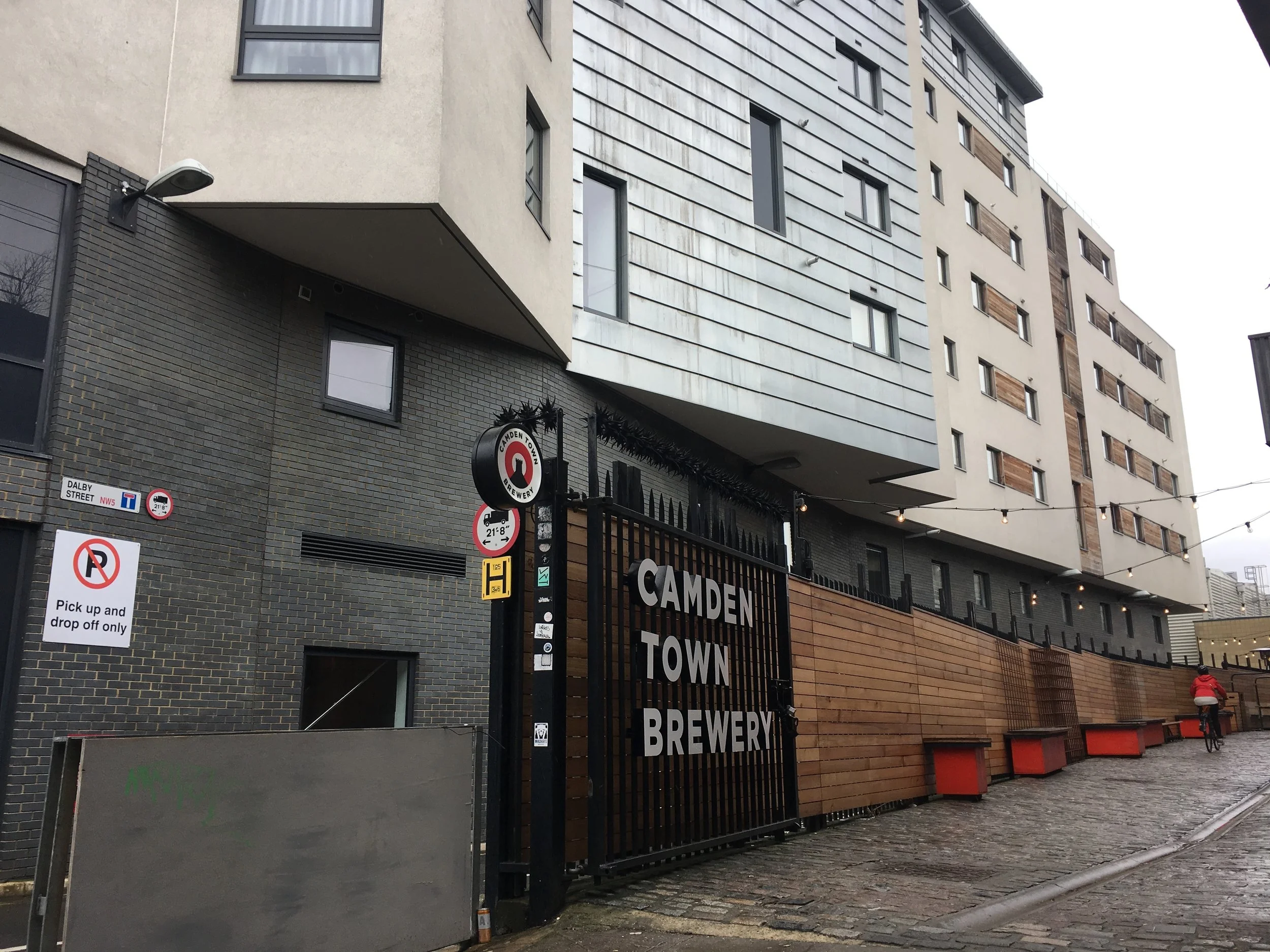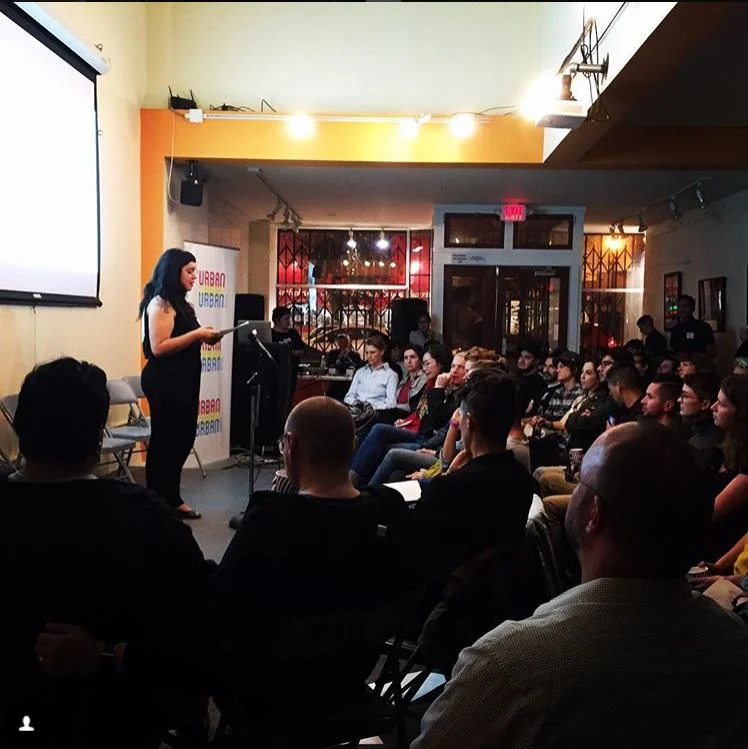The Growth of Artisan Coffee in Shanghai
By Yiqing (Isabella) Jiangcheng
Consider yourself lucky if you happen to walk pass an artisan coffee shop in Shanghai without a line of anticipating customers in front of it. Getting a fresh cup of Joe these days is not just a simple task of order-to-go, but a complex process involving knowing the highlights of bean selections, choosing between drip-brew or siphon brewer, and waiting in line. Even with the temperature below 0 degrees and limited heating effort, crowds continue to wait for that perfect brew outside of Peet’s Coffee, a San Francisco-based specialty coffee retailer that has chosen Shanghai as its very first international outpost.
Yes, China is experiencing a boom in its coffee market, and Shanghai is where the battle is most heated. From Nespresso machines to Slayer Espresso, Shanghai locals are obsessed with the latest coffee trends. In 2016, the city saw more than 6,000 coffee shops competing for market share, and that number is still growing on a daily basis. In fact, Shanghai has the most Starbucks stores on the planet. More than 600 Starbucks outlets are concentrated in this once tea-loving city.
Shanghai Starbucks Roastery. Photo credit: Moody Man.
The large conglomerates, however, are not quite satisfying the city’s growing appetite for better quality coffee, edgier mixology concepts, and more Instagramable coffee shops. Today, about 70 percent of the coffee shops in Shanghai are small chain brands or independently-owned cafes. They come in the forms of pop-ups, brand collaborations, and guest baristas. While artisan coffee retailers such as Peet’s Coffee and %Arabica have already settled down and reaching record sale numbers, other brands such as California’s Blue Bottle are also rumoured to be opening their first China store in Shanghai.
The craze for coffee in Shanghai has a long history. The city’s association with coffee started with its Concessions in the late 1800s. Under a series of Unequal Treaties, China had to open its ports for trade and lease out territories for foreign powers to occupy and control. Within these territories, also known as Concessions, western goods started to circulate along with western culture and lifestyle. And during that time, coffee became a symbol of wealth and class rather than a simple beverage.
Drinks at the Shanghai Starbucks Roastery. Photo credit: Moody Man.
Coffee was first introduced to Shanghai in the 19th Century by foreign missionaries and businessmen. In the beginning, coffee served as a cure for foreigners’ culinary nostalgia, but soon enough it was adopted by local restaurants as part of their ‘western cuisine’ menus, enabling the dark liquid to reach larger Chinese markets. Although the quality of coffee was rather low at the time, its rarity and peculiar taste helped raise it as a status symbol for the Upper class.
It was not until early 20th century that coffee slowly made its way to the general public. By 1920, Shanghai had entered its industrial golden period and was beginning to attract travelers from around the world. The flow of goods and services into the country resulted in coffee houses popping up all over the city. Most of these coffee houses were run by French and Russian expats and Jewish refugees, resulting in spaces with exotic twists. Sometimes coffee houses would even hire dancers for performances in order to attract customers, making them more suitable for socialising. By that point, coffee had become part of the people’s lifestyle.
However, during the Mao era where China was under planned economy, these coffee houses disappeared. It was not until 1990 when Starbucks opened its first Chinese branch that locals started to revive their love for this once imported treasure. Today, coffee shops have a penetration rate of 48 percent among those aged 15-49 in Shanghai.
Shanghai Starbucks Reserve Roastery Exploration Guides. Photo credit: Zoe Yeh.
The economic growth and potential of Shanghai’s coffee market was enormous and everyone was trying to get a share of the 79-billion-yuan market. The first to enter was Starbucks’ high-end coffee bar – Starbucks Reserve Roastery, taking up 30,000 square foot in Shanghai’s busiest business district, Nan Jing Road. The branch focuses on the experience of consuming artisanal coffee and offers more than 80 different types of coffee and tea drinks. It was exactly what Shanghai customers were hoping for – more sophisticated options and drink varieties. However, no one thought they would be able to enter the market in less than three years.
The Chinese government is known for its bureaucratic model and stubborn stance on regulations. Even in a global city like Shanghai, local authorities have been accused of creating great obstacles for new businesses. Many businesses have been required to go through bureaucratic screenings and permit processes that are especially difficult to comprehend as outsiders of the system. From safety procedures required by Chinese Customs to the grey areas in food safety regulations for food production/manufacturing inside retail spaces, no one had imagined a smooth process for Starbucks to set up its roastery. Surprisingly, the first Starbucks Roastery establishment only took one year to officially open - saving at least 70 percent of the anticipated time and cost. This was only made possible with the Shanghai FDA’s approval of “Shanghai Open coffee-roasting production license review rules” - conveniently enacted right before Starbucks’ entry.
The new regulation specifically outlines policies for roasteries operating within retail spaces and includes environmental control and detailed procedures and design requirements for all potential mixed use coffee houses. It was the team effort of negotiating with more than five separate governmental departments ranging from Custom to District administration on environment, human resources, development etc. These regulations were almost ‘custom-made’ for Starbucks to make its safe entrance to the market.
Shanghai Starbucks Roastery Cold Brew Bar. Photo credit: Moody Man.
Today, the roastery in Shanghai is the largest Starbucks in the world and perhaps the most profitable, having made an average 64,000 US dollars per day within the first eight weeks of its opening - double the weekly profit of an average Starbucks store in the US. This was a perfect test run for Shanghai authorities experimenting with the high-end coffee market. It is unknown if green lights have been given only to large chain businesses like Starbucks, but the fact that the Chinese government was willing to shift its regulatory stance to meet business’ requests showed the potential future for food-service industries to dabble with new business formats and models. %Arabica’s first roastery is already planning its grand opening in late spring at The Bund, Shanghai’s historic district, setting up another example of an independent artisan brand to establish itself under the new regulations.
The coffee scene is still growing and it’s growing fast. However, the downside of a quickly developing artisan coffee scene is not without perils. In Shanghai, the pricing mechanism and the cultural symbolism of artisan coffee are two aspects that make the product beyond reach of the masses.
First, the pricing for coffee at the moment is often considered luxurious. Not only does the standard Starbucks latte in Shanghai cost more than in the US and the UK (a typical artisan coffee is commonly priced around 35-40 yuan, or US$5.60-$6.30, Japanese style pour-over coffees can set customers back by 68 to 98 yuan (US$10.80-$15.50) for a single cup. A cup of coffee costs as much as or more than the average hourly wage in Shanghai, which in 2017 was estimated to be US$5.80 per hour. The prices of artisan coffee inevitably excludes a large segment of customers in the city, resulting in a retail gentrification effect.
Second, artisan coffee in Shanghai, with its historic associations with the upper class, seems to fortify a culture that many locals do not agree with. Not only do these coffee shops choose to brand their labels with a hint of colonial nostalgia, some stores do not even provide Chinese menus. This is done intentionally to attract ‘hip’ and higher educated customers, and to disguise themselves as imported brands. This has especially been criticized when such coffee houses are located in neighborhoods with low-income residents and elderly groups.
Although the artisan and specialty coffee industry has blossomed in Shanghai, there is much more that needs to be done to stabilize the market and to develop standards of social responsibility for operating businesses. Despite the rising awareness amongst businesses to benefit local communities through collaborations with local designers and brands and making financial contributions to local non-profits, these actions still largely function as marketing and promotional tools.
At the governmental level, there has not yet been clear policies on protecting local communities from gentrification, despite rapid growth of both residential and commercial property rents. This is hardly surprising as Shanghai continues to embrace the idea of ‘consumption upgrade’ - a term repeatedly used in recent government reports - and coffee seems to be the perfect example of such an upgrade in terms of its representation of a rising middle-class China.
Without commitments from administrative bodies and the business industry, it is likely Shanghai will continue to lose its local places and cultures in exchange for the next, hip and trendy coffee shop.




